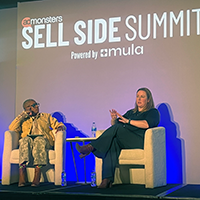It’s apparent that email marketers and service providers are taking ownership of social marketing. One only has to look at the number of social media tools unveiled recently by email marketing providers as proof.
A cynic could argue that, in all the ado about social media ultimately replacing email as a marketing tool, email professionals figured they’d best position themselves as social media experts, for the sake of job security. But Ryan Deutsch, vice president of emerging media at ThreadMarketing, a StrongMail company, says it’s because email marketers have already proven themselves at creating accountable, effective communication strategies—which is what savvy social media marketing boils down to.
“Marketing departments tend to turn to their email partners for communications strategies, because email is the king. It is a mature marketing channel,” he says. “They’re already having conversations with their email providers as to how to talk with their customers and integrate all the other channels.”
Granted, Deutsch is somewhat partial; StrongMail, after all, is best known as an email solutions provider, and ThreadMarketing bills itself as “a new kind of email and CRM agency.” Nonetheless, it’s tough to argue when he says that “the email channel is a very accountable channel, with lots of metrics. And marketers are trying to make social media accountable… If you think about how customer relationship management systems communicate with consumers, those things are already integrated with email platforms.”
Besides, when it comes to social marketing, like email marketing and other types of targeted marketing, “the trick is making the data actionable,” Deutsch says. “Once you have the insights, how do you make the information actionable?”
Identifying email subscribers who are active and influential within their social networks is a start, as well as a way to leverage the complementary strengths of the email and social media channels. For instance, you could identify the top influencers from a particular email campaign by tracking, among other things, how many times subscribers forwarded or shared an email and how many subsequent visits and conversions those actions generated.
“You can then create a look-alike model of these influencers to identify the advocates on your file,” Deutsch says, “and create unique content and offers for them so that they feel an attachment to your brand going forward”—an attachment that they then want to share with their network.
You could also take your database modeling efforts a step further, ranking your file not just by RFM—the tried-and-true recency/frequency/monetary value—but by adding a fourth component. RFM, meet RFMA: recency/frequency/monetary value/advocacy, or the value of the customer’s extended reach as determined by how much his referrals spend with the brand.
Some email marketers might contend that marketing to their existing email subscribers via social media is redundant and a waste of resources. Likewise, some social media proponents believe that by engaging with consumers via Facebook, Twitter, and the like, they no longer need to bother with email marketing.
But while some of your customers, such as those highly influential email subscribers, might be engaging with your brand via all possible channels, many more are not. “Email open rates continue to decline,” Deutsch notes. Assuming that the average open rate for retail emails is approximately 20%, “think about the uplift you can achieve if you are able to reengage the 80% who don’t open your emails when they come in?”
Just as important is the fact that, despite their new media gloss, Facebook and Twitter are closer to broadcast channels than they are to direct, one-to-one marketing vehicles. This is perhaps the most compelling reason that social media cannot be a substitute for email. Engaging with a consumer via a social network or online community can help build brand loyalty and advocacy. “But if I can then convince him to subscribe to my email channel,” Deutsch says, “I can begin to have a much more one-to-one conversation with him,” based on his behavior and preferences.



